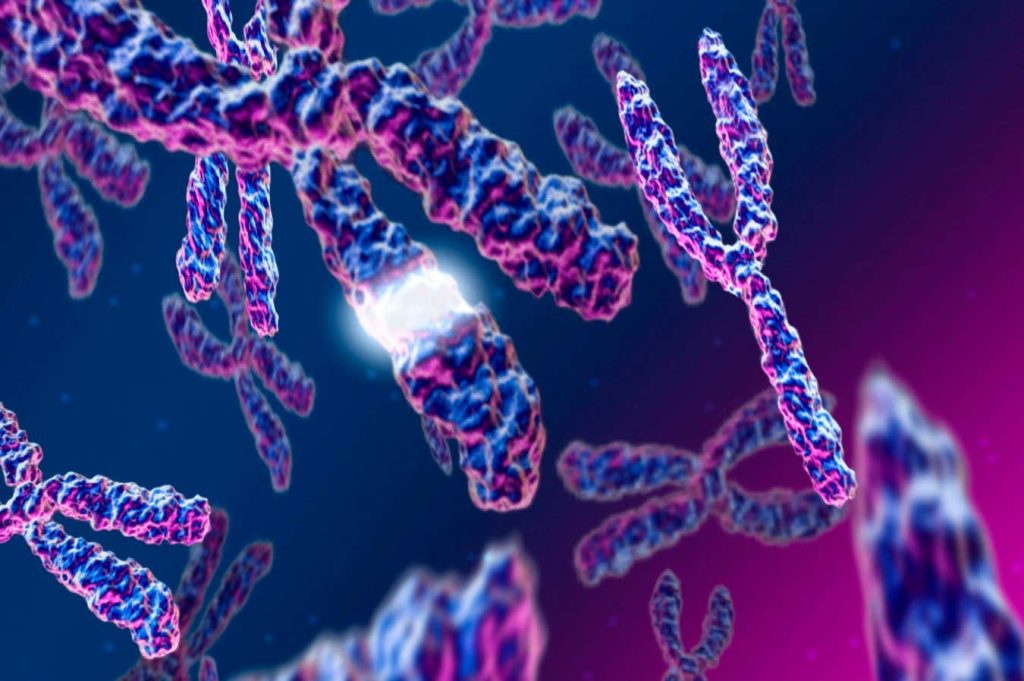An artist’s impression of XY chromosomes
THIERRY BERROD, MONA LISA PRODUCTION/SCIENCE PHOTO LIBRARY
Seven mice have been born using a process that involves turning male cells into egg cells and then fertilising them with sperm. The technique could one day allow two men in a same-sex couple to have children – with the help of a surrogate mother – who are genetically related to both of them. It could also help women with certain chromosomal conditions to have children that are biologically related to them.
The original aim of the research was to investigate options for treating infertility in women who have only one X chromosome instead of two, said Katsuhiko Hayashi at Kyushu University in Japan at the Third International Summit on Human Genome Editing in London on 8 March. The symptoms of the condition, known as Turner syndrome, vary widely but almost always include infertility because normal egg development requires two X chromosomes.
Hayashi and his team wanted to see if cells with one X could be turned into cells with two Xs. To do this, it is easiest to start with male cells, which contain one X and one Y, as the Y is the smallest and most dispensable chromosome – and it is often lost naturally.
Advertisement
The researchers created stem cells from 8-week-old male mice and picked out ones that spontaneously lost the Y chromosomes. They then manipulated the cells in a way that resulted in a few obtaining two copies of the X after cell division – normally the two cells resulting from division should only have one copy each.
“The biggest trick of this is the duplication of the X chromosome,” says Hayashi, whose team has previously developed methods for turning mouse stem cells into eggs.
The researchers used these methods to turn the XX cells into egg cells and used sperm from male mice to fertilise them. Over 600 embryos were then implanted into female mice, resulting in seven apparently healthy pups, said Hayashi.
While the purpose of the work was to explore potential treatments for infertility due to Turner’s, Hayashi says it could one day allow the creation of children with two fathers. “What I can say is only about the technological side. I think in theory it is possible,” Hayashi told New Scientist after his talk.
Hayashi’s work is extraordinary, says James Turner at the Francis Crick Institute in the UK. But to do the same in humans will require turning human stem cells into mature egg cells outside the body. While many researchers assume it is just a matter of time before we work out how to do this, it might not be possible to generate healthy eggs this way, says Turner.
For the initial experiment, Hayashi genetically edited the X chromosome so that the team could pick out the stem cells with two Xs. But he has since identified surface characteristics of cells with two X chromosomes that mean the process can now be done without genetic manipulation.
The surface markers will probably be different in human cells, but the sex conversion process should work in them, too, says Hayashi. A paper outlining the results will be published soon, he says.
It is exciting work, says Helen O’Neill at University College London. In addition to women with Turner’s syndrome and men in same-sex couples, the work could also help women with Swyers syndrome have children genetically related to them, says O’Neill. Women with this condition have an X and Y chromosome instead of two Xs, and do not produce eggs, she says.
While Hayashi is the first to create mice with two fathers, mice with two mothers were created in 2009.
Topics:

